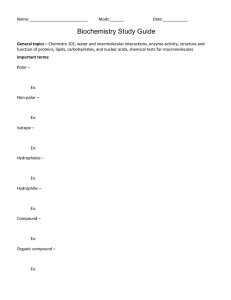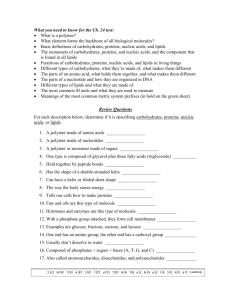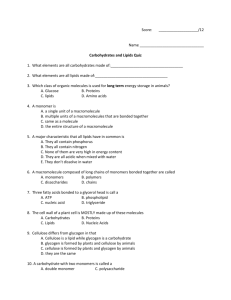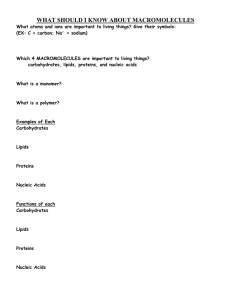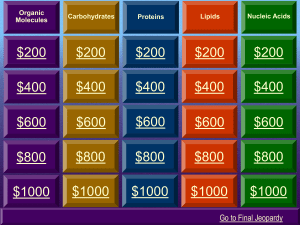File
advertisement
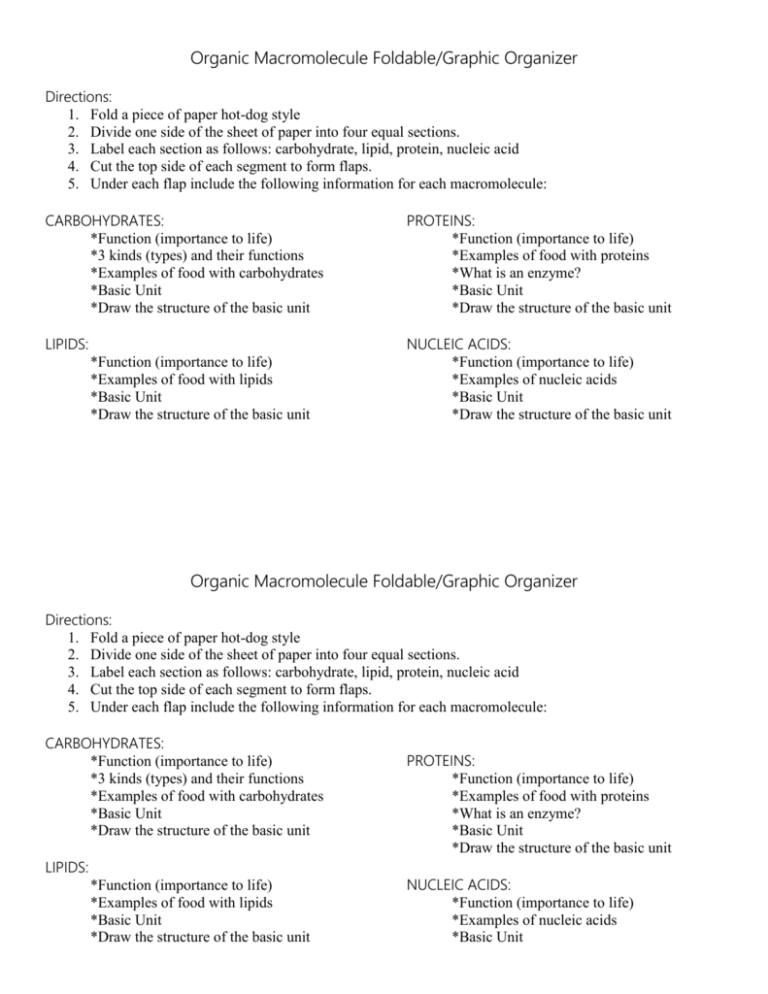
Organic Macromolecule Foldable/Graphic Organizer Directions: 1. Fold a piece of paper hot-dog style 2. Divide one side of the sheet of paper into four equal sections. 3. Label each section as follows: carbohydrate, lipid, protein, nucleic acid 4. Cut the top side of each segment to form flaps. 5. Under each flap include the following information for each macromolecule: CARBOHYDRATES: *Function (importance to life) *3 kinds (types) and their functions *Examples of food with carbohydrates *Basic Unit *Draw the structure of the basic unit PROTEINS: *Function (importance to life) *Examples of food with proteins *What is an enzyme? *Basic Unit *Draw the structure of the basic unit LIPIDS: NUCLEIC ACIDS: *Function (importance to life) *Examples of nucleic acids *Basic Unit *Draw the structure of the basic unit *Function (importance to life) *Examples of food with lipids *Basic Unit *Draw the structure of the basic unit Organic Macromolecule Foldable/Graphic Organizer Directions: 1. Fold a piece of paper hot-dog style 2. Divide one side of the sheet of paper into four equal sections. 3. Label each section as follows: carbohydrate, lipid, protein, nucleic acid 4. Cut the top side of each segment to form flaps. 5. Under each flap include the following information for each macromolecule: CARBOHYDRATES: *Function (importance to life) *3 kinds (types) and their functions *Examples of food with carbohydrates *Basic Unit *Draw the structure of the basic unit LIPIDS: *Function (importance to life) *Examples of food with lipids *Basic Unit *Draw the structure of the basic unit PROTEINS: *Function (importance to life) *Examples of food with proteins *What is an enzyme? *Basic Unit *Draw the structure of the basic unit NUCLEIC ACIDS: *Function (importance to life) *Examples of nucleic acids *Basic Unit *Draw the structure of the basic unit


